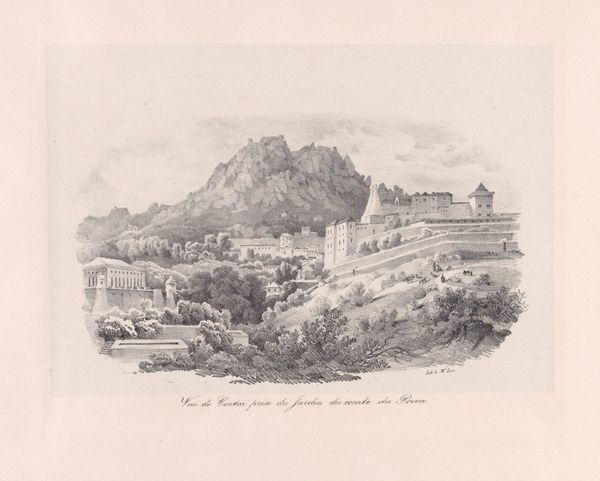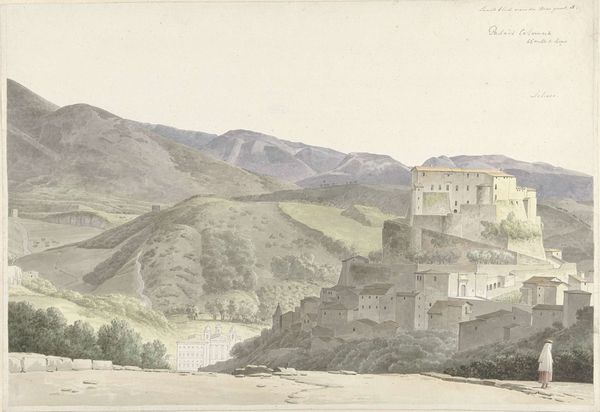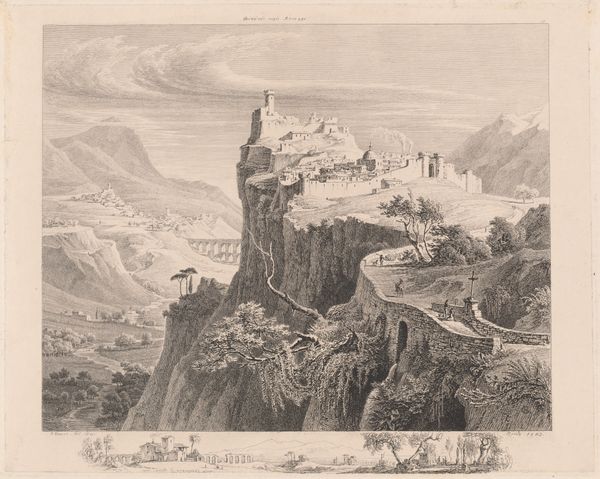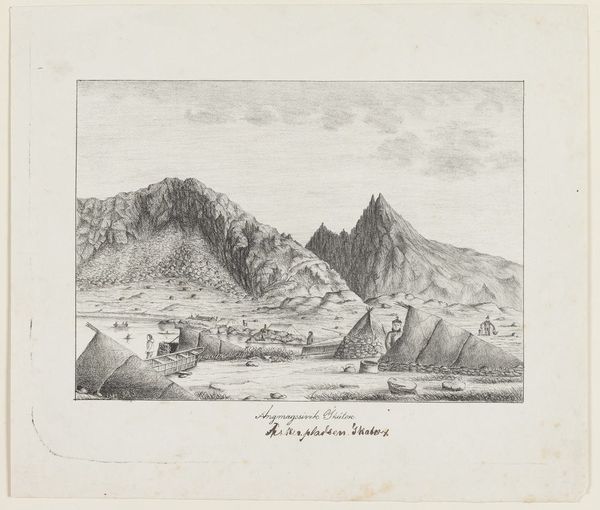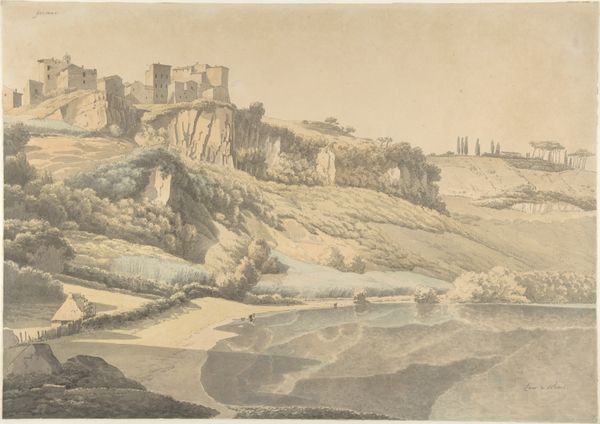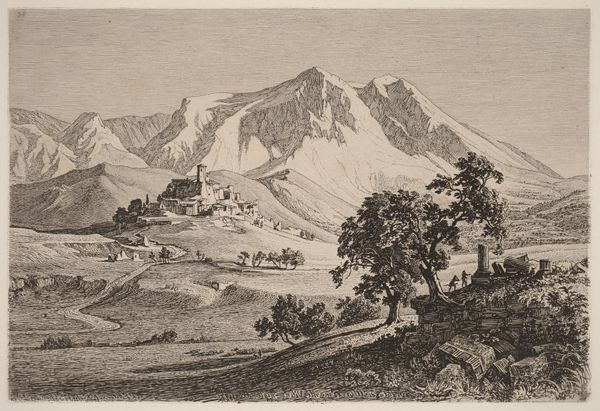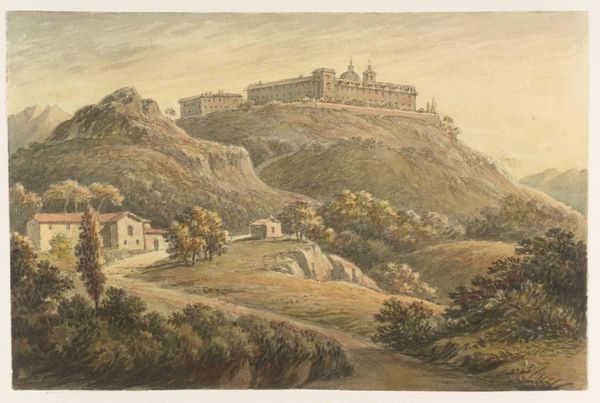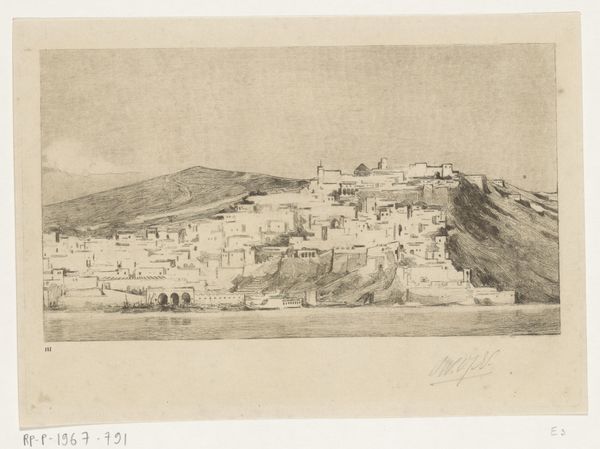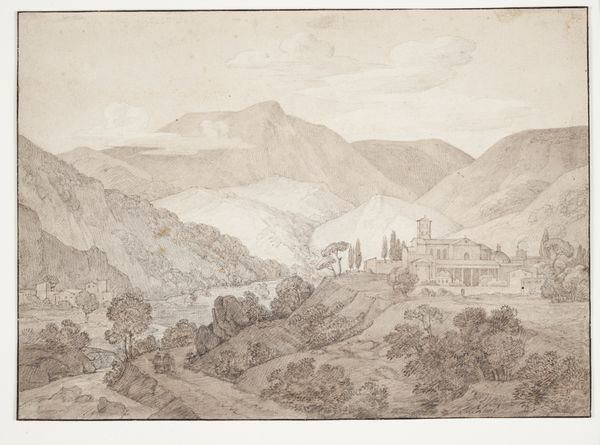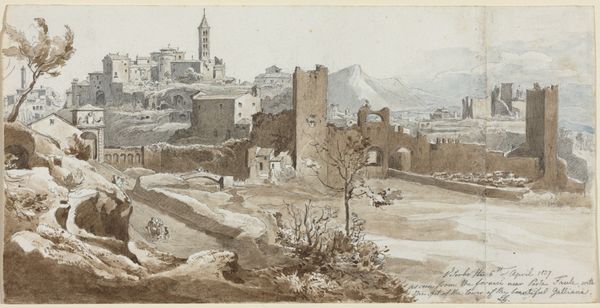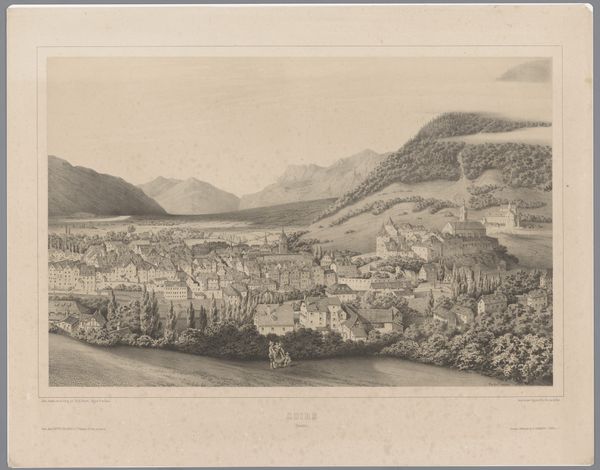
drawing, watercolor
#
landscape illustration sketch
#
drawing
#
toned paper
#
light pencil work
#
landscape
#
etching
#
personal sketchbook
#
watercolor
#
romanticism
#
sketchbook drawing
#
watercolour bleed
#
watercolour illustration
#
sketchbook art
#
watercolor
Dimensions: overall: 31.8 x 47.4 cm (12 1/2 x 18 11/16 in.)
Copyright: National Gallery of Art: CC0 1.0
Curator: Here we have Johann Georg von Dillis’ “View of Salzburg,” dating from the 1820s. The piece uses watercolor and pencil on toned paper. Editor: It’s quite delicate, almost dreamlike. The soft washes of color create a serene, distant mood, but there's also something a little melancholic about the muted tones. Curator: Dillis served as the Director of the Central Gallery in Munich. His position would certainly shape his artistic practice, likely inclining him to produce artworks suited to courtly and eventually public consumption, after ennoblement by the king of Bavaria. Editor: So it was almost like creating propaganda for Bavaria? The choice to depict Salzburg as a picturesque, almost romantic vision seems particularly relevant in that context. This idealization surely erases any tension of Bavarian control over a previously independent city. Curator: I agree, his role provided a specific lens. Romanticism, and landscape art in general at this time, often served nationalistic agendas, reinforcing a sense of place and identity tied to the land itself. Dillis was enmeshed within the structures of power that shaped artistic output and patronage. His works demonstrate the connection between art, politics, and the formation of cultural narratives. Editor: I wonder how the average residents of Salzburg at that time viewed it. It's almost voyeuristic how the piece leaves them so small, insignificant even, under the towering symbols of power in the distance, the mountains, the fortress. Curator: It speaks to how landscape art was developing in relation to political and social hierarchies. The views were framed for those in power or aspiring to it, reinforcing a particular viewpoint and sense of ownership. Editor: Thank you. Seeing through your historical lens makes me think about landscape differently—it prompts us to question whose vision and whose history is centered. Curator: Indeed. Considering art within a broader historical context allows us to really explore how cultural products engage with society.
Comments
No comments
Be the first to comment and join the conversation on the ultimate creative platform.
